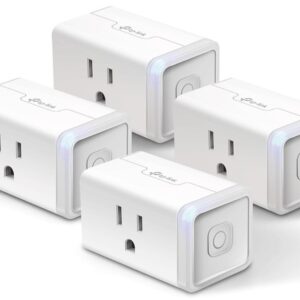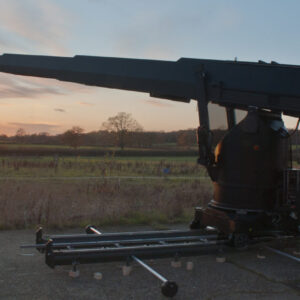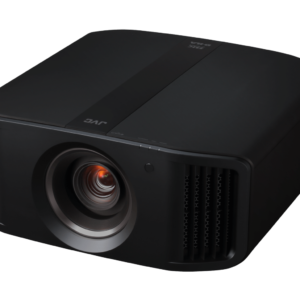By Robert Heron
robert@heronfidelity.com
May 22, 2024
Projection mapping uses digital video projectors and software tools to enable typically large-scale visual transformations of practically any physical surface. Without realizing it, you’ve likely seen projection mapping in action – it’s artistically augmented the playfield of major sports arenas, bathed the front of large buildings and other enormous facades in visually engaging animations, and transformed interior spaces in an artistic or informative way. The only practical limitations for the use of projection mapping (PM) are one’s creativity and budget.

Let there be light!
The projector is only one component of a projection mapping project. Still, the projector delivers the colorful pixels that paint the target canvas. The scale and scope of a particular PM installation will dictate the hardware selection, and one of the first considerations is the amount of illumination required for an impressive visual presentation. An artistically illuminated entryway within a light-controlled interior space will require less projected light output than an outdoor installation that covers a large commercial building or landmark structure.

A decent consumer-grade projector may offer 2000-4000 lumens of light output from the lens. The commercial-grade projectors in many PM projects can deliver from 15000 to more than 60000 lumens. When a PM project requires additional light for an effective presentation or a larger area needs to be illuminated, multiple projectors can be stacked or coupled into arrays to provide the necessary brightness or coverage. The choice of lens configurations or the use of first-surface mirrors will also affect the amount of light a particular projector can deliver and must be accounted for when creating a PM presentation.

Environmental conditions are a critical consideration for PM projects, especially outdoor presentations. In addition to accounting for ambient lighting that could wash out the image, a particular installation may require protective enclosures to minimize the effect of temperature, moisture, and image-shaking wind while the projector is in operation.
Creating the Illusion
The magic of projection mapping is placing the pixels exactly where needed while compensating for image distortion caused by a target surface that isn’t perfectly flat and perpendicular to the projector.
It is challenging enough to transform a projector’s output into an image with straight sides and square corners in a dedicated and optimized home theater environment. The process requires careful positioning and alignment of the projector’s optics with the screen surface – precisely “mapping” its output to the exact dimensions of the screen. Now, imagine the difficulty of manipulating multiple projectors to produce a well-defined, seamlessly blended, and distortion-free visual presentation across a large area that may feature a variety of angled surfaces, curves, or otherwise complex 3D shapes.

Crosshatch video test patterns are a handy starting point in these scenarios, as they help visualize projector coverage and image distortions from the audience’s perspective. More advanced projectors feature integrated mapping tools to assist with multi-projector image alignment, edge-blending, and 3D distortion correction. However, dedicated hardware and software are employed for most commercial applications to help with the PM creation process, content delivery, and ongoing project maintenance.

A primary function of projection mapping applications is to allow users to precisely define a virtual canvas by manually outlining the target area while masking the projector’s output where it is not wanted or needed. Premium commercial PM tools are optimized to manage the output of dozens of linked projectors and provide advanced distortion correction features – think projections onto domes or practically any arbitrarily shaped surface.

Camera-assisted de-warping and the blending between projectors are commonplace in commercial PM installations. They can dramatically accelerate a project’s deployment and optimization. When used with fixed LED or laser markers placed around the projection surface, automated or manual recalibration tools can also be deployed whenever a misalignment in the PM presentation is detected.
Most consumer projectors provide rudimentary built-in tools to correct geometric distortions on flat surfaces when physical placement is restricted, e.g., keystone correction. Some recent consumer projectors are incorporating automated image blending and distortion correction through integrated cameras or companion apps on linked mobile devices.

Feeding the beast
With strategic projector placement and a well-mapped surface, it is time to craft the content for use in a presentation. For a PM installation using a single 1080p or 4K projector, delivering static or motion content to the projected pixels can be handled by a connected computer, disc player, or other media device. For more complex PM projects, the effective resolutions involved with a multi-projector configuration may exceed 16K – the equivalent combined resolution of 16 4K projectors! The ability to mix and manage dozens of static and motion elements into a detailed PM presentation is where specialized software and media delivery devices can faithfully bring an artist’s vision to a virtually mapped environment.

Not exactly DIY-friendly
A search of the internet will reveal the remains of several abandoned open-source, once freely available projection mapping software projects – Splash is a rare exception with a functioning website and updates within the last year or two. The most affordable PM software packages that don’t require a particular brand or model of a projector include options like HeavyM and MadMapper. Prices for these two start at $35-$50 per month to get a taste and $430-$500 to own them with mostly unrestricted features. Numerous DIY videos on YouTube combine free-ish and paid applications to generate budget-friendly projection-mapped visuals. Still, the learning curve can be steep, and many videos are product-promotional at best.
AI lends a hand
Text-to-image models powered by deep learning algorithms are making their way into projection mapping tools. Currently, PM software like LumaMap leans on existing models from companies like DreamStudio to assist with custom content creation, where users can enter text prompts or basic sketches that transform into (hopefully) appealing visuals. When combined with camera-based assistance, future PM products with machine-trained features seem likely to automate the masking process more effectively while making generating and incorporating unique static imagery and motion video more accessible.
Robert is a technologist with over 20 years of experience testing and evaluating consumer electronics devices, primarily focusing on commercial and home theater equipment.
Robert's expertise as an audio-visual professional derives from testing and reviewing hundreds of related products, managing a successful AV test lab, and maintaining continuous education and certifications through organizations such as CEDIA, the Imaging Science Foundation (ISF), and THX.
More recently, Robert has specialized in analyzing audio and video display systems, offering comprehensive feedback, and implementing corrective measures per industry standards. He aims to deliver an experience that reflects the artists' intent and provides coworkers and the public with clear, insightful product information.










